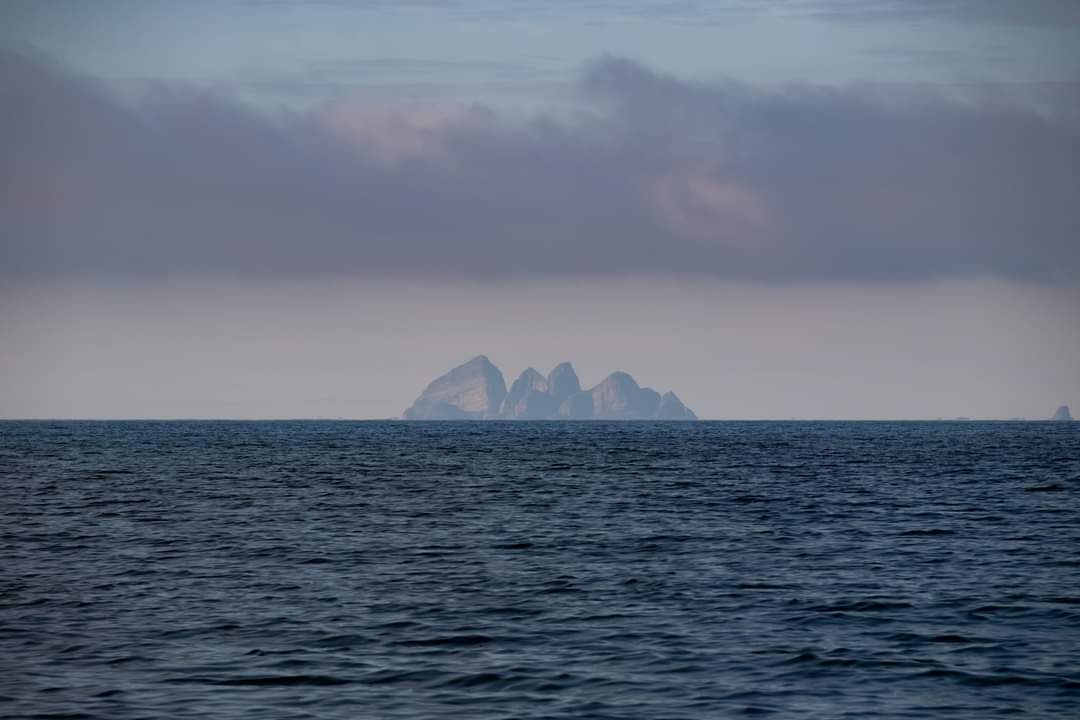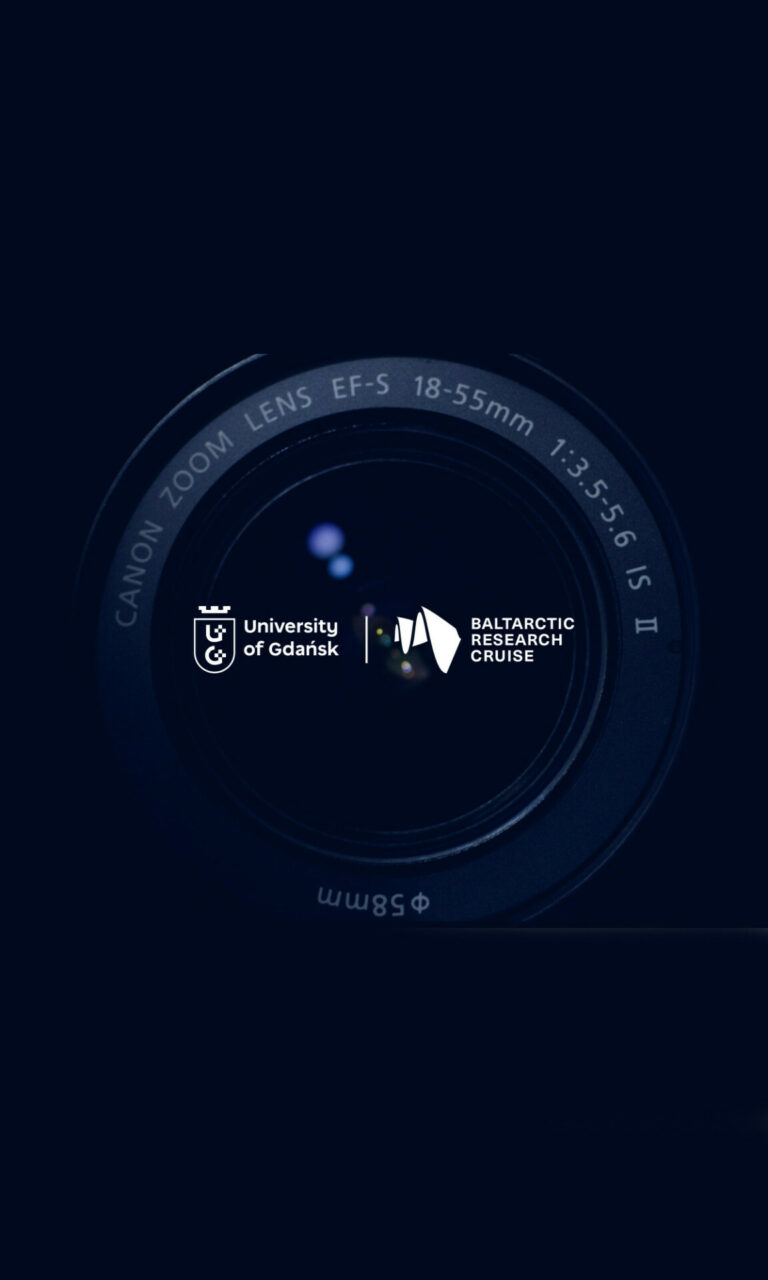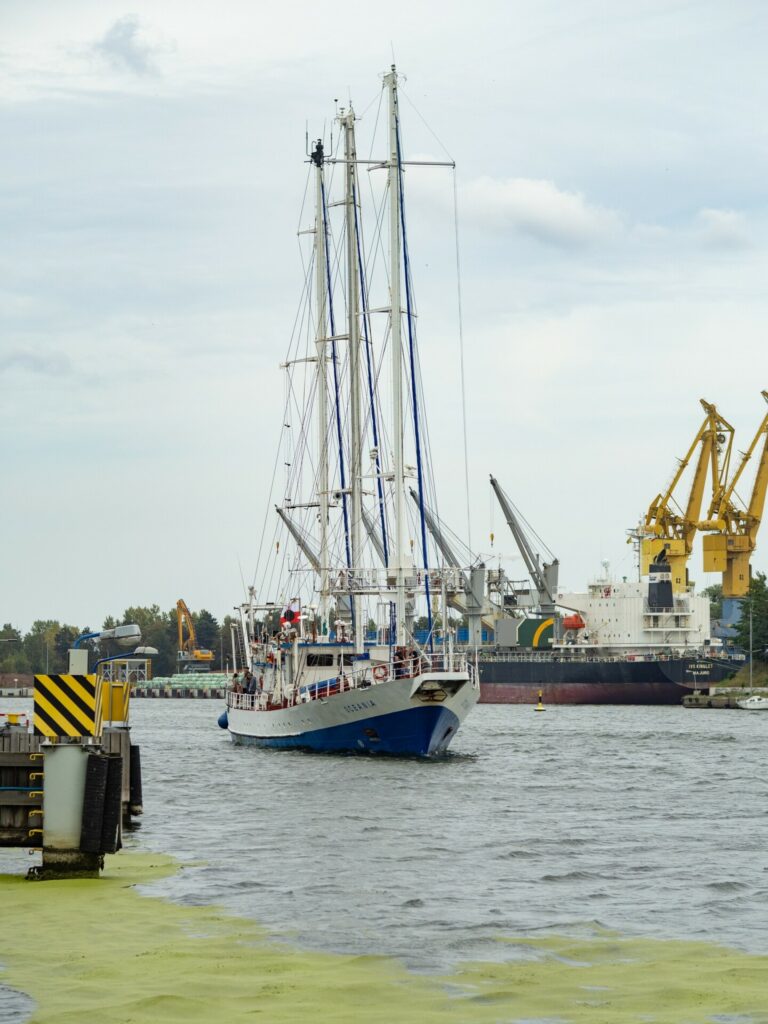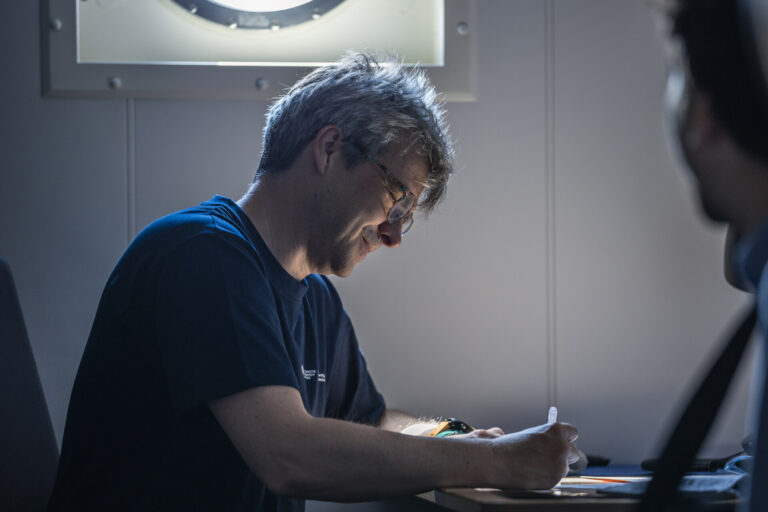We live in a postcard from the north. A sea so smooth that the water looks like liquid metal in the sun, it’s warm and crisp at the same time, with toothy Norwegian islands on the horizon and snow-capped mountain peaks behind them. A small whale with funny white fins, identified as a common minke whale, circles around the Oceanograf. At night we all celebrated the last night on board – it lasted an hour, the sun went down half an hour after midnight and almost immediately rose a few dozen minutes later. There are only fifty nautical miles left to the Arctic Circle, so we won’t experience darkness until the end of the voyage.
And the end is just moments away. One more clear night, one more sampling station, and tomorrow evening we should be standing at the quay in Bodø. One can feel in the mood and in the conversations the spleen of the end of the cruise, as always lined with a little guilt. Because, after all, children, husbands, wives are waiting, it would be appropriate to miss and not be able to wait to return. And of course we all miss, sure, but at the same time it’s a pity that it’s over. We won’t meet in the morning in the mess hall for coffee, we won’t sit down to a board game in the evening, after two weeks like any crew we have formed a small tribe with our own customs and rituals.
Life on the Oceanograf has its own repetitive rhythm. Meal times are regular like in a hospital. Breakfast at 7, lunch at 12, dinner at 6 p.m. Our chief cook Arek – alone without a helper! – runs a restaurant here for more than twenty people serving a tweaked version of Polish cuisine, managing to prepare something meat, something fish and something vege for each meal. Everything delicious, traditionally food for vegetarians has to be tucked away and set apart, otherwise it would go first.
Wait a minute, I forgot the most important part of the culinary schedule of the day: at 3 pm the afternoon snack rolls in. There are only as many portions as there are crew members, so there are discussions. Can professors forbid students from eating dessert? Should Enrico eat panna cotta, since he is Italian and has panna cotta at home? Can vegetarians eat jello?
It’s not without reason that old sailors say that the chief cook is the most important person on a ship, because when people are well fed, they are satisfied. And two dozen unhappy people on a bouncing piece of steel in the middle of the sea is not a recipe for a successful trip. When almost the entire seafaring crew was being replaced in Bergen, we were ready to protest with a banner saying “The cook must stay.”
The cook stayed.
The Mess Hall is both a cafeteria and a common room where we have international board game battles and where phrases like “And now I’m putting Rysiek into Więzienie” are uttered around the table. The center of social life empties out every day for a few hours when we arrive at the sampling station and everyone moves to the research deck aft and the adjacent laboratories.
And that’s where the serious science happens, also according to its own rhythm. The Oceanograf first trawls the net for microplastics, then parks – more on that in a moment – and while stationary, an impactor called a vacuum cleaner takes air samples, Niskin bottles dive for water, nets drop for plankton. Cameras, salinity and temperature sensors, radiation sensors also land in the ocean. And an invariably hilarity-inducing microturbulence meter that resembles a baby bottle washing brush. Most of the equipment is lowered and lifted by the ship’s cranes, but some things have to be hauled out by hand, and this is where a scribe comes in handy, meaning yes, I have something to do.
Then it all goes in canisters, bottles and collectors to the shiny stainless-steel lab, where it is turned into preparations and samples, to be later returned to the university in refrigerators to be studied and analyzed along with terabytes of various data.
I mentioned parking. Well, the Oceanograf, like ships used for work in the offshore industry, is equipped with a dynamic positioning (DP) system. All it takes is the right command on the bridge to make the ship stand still, regardless of the wind and sea state – up to a reasonable weather limit, of course. This is made possible by the fact that the ship has four electric thrusters attached to its two hulls – a larger stern thrusters and a smaller bow thrusters – which are capable of spinning on their own axis, and the system controls their power to make the ship stick motionlessly in the middle of the ocean.
The thrusters may be electric, but this isn’t some miracle eco-ship powered by love of the planet, it needs powerful diesel engines to produce the electricity needed for propulsion and life on board in general.
When the research at the station is over, we cruise slowly for a few hours so that Ola can finish hunting for bananas, and only when vibrations pass over the hull, the electric engines whirr, and the ship accelerates, it is a sign that we have moved at a cruising speed of ten knots to the next and final station.
In a few hours we will arrive at the magical border of the Arctic, the Arctic Circle at latitude 66°33′ N.
OK, let me explain. This isn’t a banana hunt, but a hydroacoustic survey of the water and bottom using a technologically advanced sonar. But the fish – and whales – display as banana-like shapes on this ocean ultrasound survey. Really.
R/V Oceanograf
BaltArctic Research Cruise, Day 16
June 18, 2024





